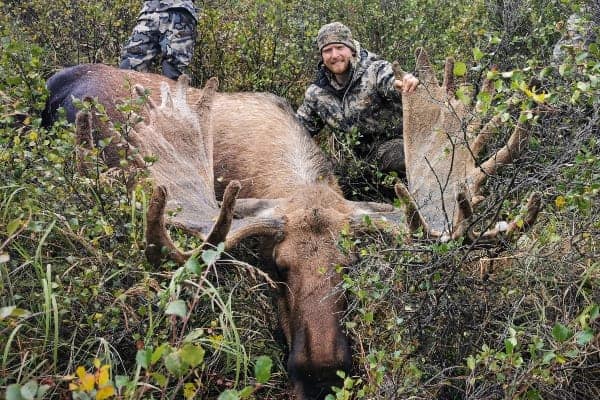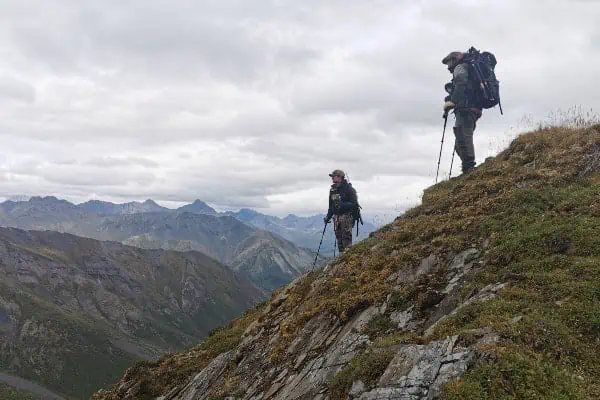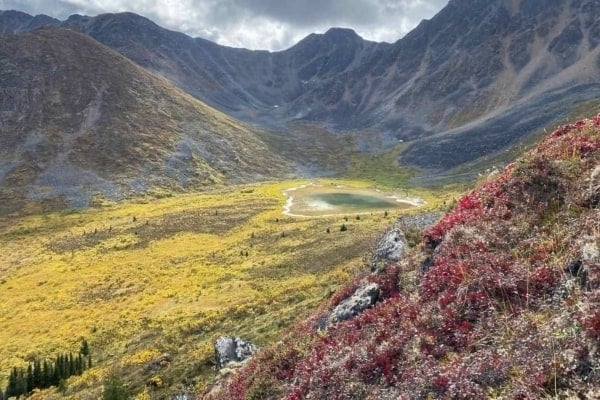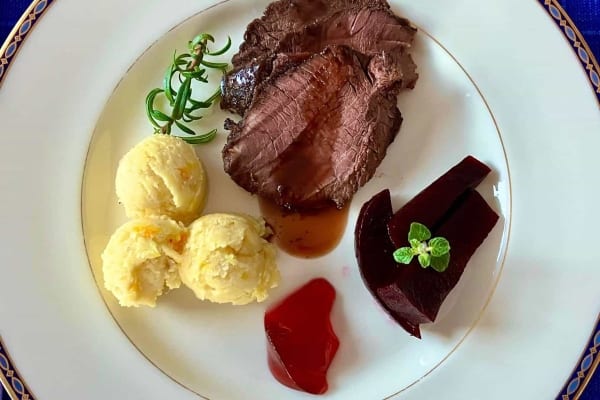For much of this week the smell of hanging meat has been lingering in my nostrils, and my hands are abnormally soft. That’ll be because it’s butchering time. While I have never harvested a moose myself, I like getting up close and personal with my food and I value the experience of butchering – it takes skill and patience, and results in a knowing of the animal that will support me in the coming months or years.
The hours spent in the company of a recently living creature fuels storytelling and contemplation. As I trim and slice I listen to how this particular life, full of rushing blood and hormones and wild scents, came into contact with another life, one thinking of the year ahead, of food for his family and friends. Of how, for a moment, the earth stood still, nothing existing outside of these two beings, of how for an instant there was a connection where they almost became one – and an abrupt parting, one life remaining.
We work on a front quarter, following muscles and tendons to bone, looking back and forth between our knives and instructional books open to diagrams of cows, marked out with neat dashed lines, as arbitrary as any lines on a map.
I share the disbelief I see on my friend’s face. We both find it incredible that these neatly labeled packages of meat for the freezer we are making are one-and-the-same as the animal that he had watched in his element, on a sandbar in the middle of the river.
One single animal was the source of all the weight he had carried from sandbar to camp, camp to boat, boat to truck, and finally to the shop where each piece hung on its own cord, turning slowly in the low light.
When we butcher a cow, it becomes beef. A moose may become roast or steak, but moose it remains. Witnessing the transformation helps me remember this.
A Recipe for Bresaola
Bresaola is a good introduction to meat curing because it doesn’t involve grinding or chopping – techniques that increase surface area and thus the potential for contamination. Traditionally made with beef round, I have adapted this recipe from Preserved by Nick Sandler and Johnny Acton. I’ve had good results with the adaptation, which can be used with a variety of moose roast cuts and local flavours. The spicing can vary according to local availability and preference.
- 3 pounds raw moose, for example, rump roast
- 1 ¼ pound non-iodized salt
- 2 tablespoons sugar
- ½ cup red wine
- 4 cloves garlic, chopped
- 2 tablespoons Korean chili flakes
- 2 whole Espellette chilis
Labrador tea leaves, rosemary, black pepper, juniper berries, chili powder, black pepper and herbs, such as thyme, and rosemary
Mix all ingredients in a ceramic or glass container and rub well into roast. Tie with string and let sit in the cure for one week, turning and coating once per day. Remove and wrap in several layers of cheesecloth. Tie up again and hang in a cool dry place for three weeks to a month until hard and dry. Store in a cool dry place and slice thinly into soups and atop salads, omitting salt from your recipes.




